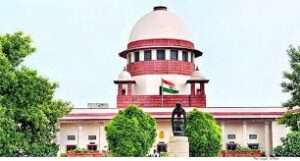
This article has been written by SHUBHAM SAURABH, an LL.M. Student at Gujarat National Law University, Gandhinagar. Completed his B.A.LL.B. from Central University of South Bihar, Gaya. The core area of interest is Corporate law, Insurance law, and Securities law.

Abstract
Corporate Insolvency Resolution Process is a method of rescuing a business. This process involves a crucial role in various economies including India’s relatively new Insolvency and Bankruptcy Code, 2016. The specific procedure and process to undertake the insolvency proceeding in various jurisdictions like the United States of America, the United Kingdom, and Germany. These countries have a robust mechanism for the Corporate Insolvency Resolution Process compared to the Indian method. This comparative analysis will help to understand the adopted process in the Insolvency and Bankruptcy Code, 2016 from various jurisdictions with a special focus on Corporate Insolvency Resolution Processes. As these jurisdictions share a common objective of resolving insolvency cases efficiently, whether through rehabilitation, liquidation, or restructuring. However, the specific legal processes, timelines, and priorities may differ significantly. The choice of insolvency framework depends on the unique circumstances and goals of the debtor and creditors involved. In each jurisdiction, legal expertise and procedural knowledge are essential for navigating the complexities of the CIRP successfully.
- Keywords: CIRP, Insolvency and Bankruptcy Code, 2016, United States Bankruptcy Code, 1978, Insolvency Act 1986, Insolvenzordnung, 1999.
CHAPTER 1: INTRODUCTION
Background and Significance of Corporate Insolvency Resolution
Corporate insolvency resolution is a critical aspect of modern economic systems, addressing the challenges that arise when businesses face financial distress. Over the years, the dynamics of corporate insolvency have evolved, reflecting changes in business practices, financial markets, and legal frameworks. Understanding and effectively managing corporate insolvency is not just a matter of financial concern but also a pivotal element in maintaining economic stability and fostering a conducive environment for entrepreneurship. The consequences of corporate insolvency extend beyond the companies involved, impacting creditors, employees, shareholders, and the overall economy. The significance of this issue is underscored by the introduction of comprehensive insolvency laws and frameworks worldwide. This chapter seeks to provide an in-depth analysis of corporate insolvency resolution, comparing practices in India with global standards, to shed light on their implications and offer insights for improvement.
Purpose of the Comparative Analysis
The primary purpose of this comparative analysis is to examine the corporate insolvency resolution processes in India and compare them with practices adopted in various countries across the globe. This study aims to address several critical questions: How does India’s corporate insolvency resolution framework fare in comparison to international standards and best practices? What are the key strengths and weaknesses of the Indian system, and how do they relate to global practices? By conducting this analysis, we intend to provide a comprehensive assessment of the Indian framework and offer recommendations for enhancing its effectiveness. Furthermore, the study seeks to serve as a valuable resource for policymakers, legal practitioners, academics, and anyone interested in the intricacies of corporate insolvency resolution.
CHAPTER 2: SCOPE AND METHODOLOGY
The scope of this comparative analysis encompasses an examination of Corporate Insolvency Resolution Processes in India, as well as selected international jurisdictions known for their effective insolvency regimes. The study will focus on insolvency practices from the recent past, taking into account any legislative changes and developments up to our knowledge cut-off date in September 2021. My research methodology will involve a comprehensive review of relevant legal documents, academic literature, and statistical data. Nonetheless, this research aims to provide a rigorous and informative analysis of corporate insolvency resolution processes on a global scale, with a specific emphasis on the Indian context.
The study is being conducted by adopting the doctrinal method.
The relevant data for the doctrinal study has been collected from various sources like primary and secondary.
Primary sources include data from
- Legislative Enactment, IBC, 2016
- United States Bankruptcy Code of 1978.
- Insolvency Act 1986.
- Insolvenzordnung, 1999.
Secondary Sources include data from
- Text Books
- Commentaries
- Articles
- Website
CHAPTER 3: CORPORATE INSOLVENCY RESOLUTION PROCESS FRAMEWORK IN INDIA.
Insolvency Legislative Framework in India After IBC, 2016
After the initiation of Liberalization, Privatization, and Globalization (LPG) in India, numerous economic reforms were introduced. Among these reforms was the promotion of unrestricted corporate entry, which greatly enhanced the ease of conducting business. Additionally, in 2002, competition laws were enacted, fostering healthy competition among companies. However, India lacked sufficient legislation for the orderly dissolution of companies.
In 2014, a crucial development in bankruptcy reform emerged when the Ministry of Finance established the Bankruptcy Law Reforms Committee (BLRC) under the leadership of Dr. T. K. Viswanathan. As a result of BLRC’s recommendations, the Insolvency and Bankruptcy Code (IBC) was proposed. Consequently, IBC came into effect in 2016, providing a mechanism for companies to exit more smoothly. “The code stipulates a uniform law. Each and every previous legislation, enactments concerning insolvency and bankruptcy that are spread are to be carried within the frame of single legislation”.[i]
If we analyze the framework of IBC, it has a regulator, the Insolvency and Bankruptcy Board of India, IBBI which regulates the proceedings of insolvency and also regulates the entities registered under it, so as to speed up the process of insolvency. So IBBI also regulates Insolvency Resolution Agencies, which makes the code and ethics for the process of insolvency, Insolvency Professionals, who supersede the Board of Directors in reviving the distressed company and Information Utilities, who gives the financial information about the companies in helping the ease of exit for the companies.
Within the framework of the Insolvency and Bankruptcy Code (IBC), there exists a designated Adjudicating Authority (AA) responsible for settling disputes and overseeing insolvency proceedings. One of these Adjudicating Authorities is the National Company Law Tribunal (NCLT), where petitions can be filed against companies that have defaulted. The National Company Law Appellate Tribunal (NCLAT) serves as the appellate body for NCLT decisions.
Another Adjudicating Authority is the Debt Recovery Tribunal (DRT), which handles petitions against individuals who have defaulted on their payments. The Debt Recovery Appellate Tribunal (DRAT) acts as the appellate authority for DRT decisions.
Corporate Insolvency Resolution Process
In India, IBC provides a legal framework for the resolution of corporate insolvency and bankruptcy matters. This mechanism is known as the Corporate Insolvency Resolution Process (CIRP). These are the steps involved in it:
1. By submitting an application to the NCLT, either the financial creditor if not an operational creditor, once the company triggers the default of one crore rupees or the corporate debtor Suo Moto may start the CIRP.
2. The insolvency resolution procedure begins when the NCLT appoints an Interim Resolution Professional (IRP), who assumes control of the company when the NCLT accepts the application. An IRP controls the management of the company and starts the process of resolving insolvency. NCLT will declare a moratorium for the Company and also will cause a public announcement by issuing notice for the initiation of CIRP.
3. The IRP addresses the claims from creditors and creates a Committee of Creditors (COC) consisting of only the financial creditors of the company. In the first meeting of the COC, a resolution will decide if the IRP would continue as a Resolution Professional (RP) or a new person to be appointed as the RP. 4. Resolution Plan – The COC accepts resolution proposals from potential resolution applicants and assesses them according to a set of parameters. The strategy that maximizes the company’s asset value and strikes a fair balance between the interests of all stakeholders is approved.
5. Resolution plan approval – The resolution plan is filed before the NCLT for approval after being authorized by the CoC.
6. Execution of resolution plan: If the NCLT approves the resolution plan, the successful resolution applicant assumes control of the business and puts the resolution plan into action.
7. Closure of CIRP – Upon completion of the resolution plan, the CIRP is concluded and the company is handed over to the successful resolution applicant.
The CIRP procedure is time-bound and must be finished within 330 days, even if NCLT grants additional extensions. The corporation enters liquidation if the CIRP is not finished in the prescribed time period.
CHAPTER 4: GLOBAL PRACTICES IN CORPORATE INSOLVENCY RESOLUTION
Corporate Insolvency Resolution Process in the United States of America[ii]
The Corporate Insolvency Resolution Process (CIRP) in the United States of America is governed by the Federal Bankruptcy Code. The primary chapters of the Bankruptcy Code that deal with corporate insolvency are Chapter 7, Chapter 11, and Chapter 13. Each chapter serves a different purpose and applies to different types of debtors. Here’s an overview of how the CIRP works in the United States:
This chapter is typically used for liquidation. When a company cannot continue its operations and is unable to pay its debts, it may file for Chapter 7 bankruptcy. In this process, a bankruptcy trustee is appointed to sell the company’s assets, and the proceeds are used to pay off creditors in a specific order of priority. Once the assets are exhausted, any remaining debts are discharged, and the company ceases to exist.
The Processes involved in the liquidation process are listed below:
Step 1. Filing for Chapter 7:
The process typically begins with the debtor (the company) filing a petition for Chapter 7 bankruptcy in a federal bankruptcy court. The debtor must provide a list of assets, liabilities, income, expenses, contracts, leases, and a statement of financial affairs.
Step 2. Automatic Stay:
Upon filing for Chapter 7, an automatic stay goes into effect. This stay immediately halts all collection actions by creditors, including lawsuits, repossessions, and foreclosures. This gives the debtor temporary relief from creditor actions while the bankruptcy process unfolds.
Step 3. Appointment of a Bankruptcy Trustee:
Once the bankruptcy petition is filed, a bankruptcy trustee is appointed by the court. The trustee’s role is to oversee the bankruptcy process, sell the debtor’s non-exempt assets, and distribute the proceeds to creditors.
Step 4. Liquidation of Assets:
The bankruptcy trustee identifies and liquidates the debtor’s non-exempt assets. Non-exempt assets are those that are not protected from liquidation under bankruptcy law. Common examples of exempt assets include a certain amount of equity in a primary residence, a vehicle up to a certain value, and necessary personal items.
Step 5. Priority of Payments:
The proceeds from the sale of non-exempt assets are used to pay off creditors in a specific order of priority:
a. Secured creditors: These creditors have collateral backing their loans (e.g., mortgages or car loans) and are usually paid first to the extent of the value of the collateral.
b. Priority unsecured creditors: Certain unsecured debts, such as tax obligations and unpaid child support, are given priority and are paid before other unsecured debts.
c. General unsecured creditors: These creditors, which may include credit card companies and medical providers, are paid with any remaining funds after secured and priority debts are satisfied.
Step 6. Discharge of Debts:
Once the trustee has distributed the available assets to creditors, any remaining unsecured debts are discharged. This means the debtor is no longer legally obligated to repay those debts. However, certain types of debts, such as student loans, child support, and certain tax debts, may not be discharged.
Step 7. Case Closure:
After the assets have been liquidated, the debts have been paid to the extent possible, and the debtor has received a discharge, the bankruptcy court closes the Chapter 7 case. The debtor’s remaining assets (if any) are typically returned to them, and the company ceases to exist as a legal entity.
It’s important to understand that not all assets are necessarily liquidated in a Chapter 7 bankruptcy. Exemptions vary by state, and some debtors may be able to retain certain assets if they fall within the allowed exemptions. Additionally, Chapter 7 is primarily used for businesses that are no longer viable and need to be dissolved, as opposed to businesses seeking to continue operations and restructure their debts, which may opt for Chapter 11 bankruptcy. Consulting with a bankruptcy attorney is crucial for a debtor considering Chapter 7 bankruptcy to navigate the complex process and understand how it applies to their specific situation.
Chapter 11: Chapter 11 bankruptcy is a reorganization process designed to help financially distressed companies continue their operations while restructuring their debts. In a Chapter 11 case, the debtor (the company) remains in control of its assets and operations, but it must submit a reorganization plan to the court for approval. This plan outlines how the company intends to pay off its creditors over time. Creditors must vote to accept or reject the plan, and if accepted, the company can emerge from bankruptcy as a going concern.
The step-wise processes the involved in insolvency process for distressed companies are as follows:
Step 1. Filing for Chapter 11:
A financially distressed company, also known as the debtor, initiates the Chapter 11 process by filing a petition with the federal bankruptcy court. This petition includes detailed financial information, a list of assets and liabilities, current income and expenses, and a statement of financial affairs.
Step 2. Automatic Stay:
Just like in other bankruptcy chapters, filing for Chapter 11 triggers an automatic stay. This legal provision immediately halts all collection actions, lawsuits, and creditor efforts to seize assets or enforce claims against the debtor. This gives the debtor some breathing room to develop a reorganization plan.
Step 3. Continuation of Business Operations:
Unlike Chapter 7, where a trustee typically takes control and liquidates assets, in Chapter 11, the debtor continues to operate its business as a “debtor in possession.” This means the company retains control over its assets and day-to-day operations. The goal is to keep the business running and generate revenue during the restructuring process.
Step 4. Development of a Reorganization Plan:
The debtor must create a reorganization plan, which outlines how it intends to restructure its debts and pay off creditors over time. The plan often includes proposed changes to the company’s capital structure, such as reducing debt, renegotiating contracts, and potentially selling non-essential assets. The plan must be filed with the bankruptcy court and shared with creditors.
Step 5. Disclosure Statement:
Alongside the reorganization plan, the debtor must provide a disclosure statement to creditors. This document contains detailed financial information and explanations of how the plan will affect creditors’ interests. Creditors rely on this statement to evaluate the feasibility and fairness of the proposed plan.
Step 6. Creditors’ Committee:
In many Chapter 11 cases, a committee of unsecured creditors may be appointed to represent the interests of all unsecured creditors. The committee plays a crucial role in negotiating with the debtor and may propose modifications to the reorganization plan.
Step 7. Voting on the Reorganization Plan:
Creditors have the opportunity to vote on the reorganization plan. To be accepted, the plan typically requires the approval of at least one impaired class of creditors (creditors whose rights are affected by the plan) in addition to meeting other statutory requirements. The court must ultimately approve the plan if it finds it to be fair, feasible, and in the best interests of creditors.
Step 8. Confirmation of the Plan:
If the reorganization plan is approved by the required majority of creditors and the court, it is confirmed by the court. This confirmation means the plan becomes legally binding on all parties involved.
Step 9. Implementation of the Plan:
The debtor then begins to implement the reorganization plan. This may involve making payments to creditors according to the plan’s terms, selling assets, renegotiating contracts, and taking other actions outlined in the plan.
Step 10. Emerging from Bankruptcy:
Once the debtor successfully carries out the plan and fulfills its obligations, it can emerge from Chapter 11 bankruptcy as a going concern. The company continues its operations, having resolved its financial difficulties and restructured its debts.
Chapter 11 is a complex process that allows financially distressed companies to restructure and potentially thrive again. It is often used by larger corporations and businesses looking to preserve their operations and value. The success of a Chapter 11 case depends on the debtor’s ability to develop a feasible plan and gain the support of creditors and the court. Legal and financial expertise is essential in navigating this process effectively.
Chapter 13: While Chapter 13 is primarily designed for individuals with regular income, sole proprietorships or small businesses can also use it to reorganize their debts. In a Chapter 13 case, the debtor proposes a repayment plan to the court, which typically spans three to five years. The plan must demonstrate how the debtor intends to pay off their debts in that time frame. Once the plan is successfully completed, the debtor receives a discharge of remaining eligible debts.
- Corporate Insolvency Resolution Process in the United Kingdom[iii]
In the United Kingdom, the Corporate Insolvency Resolution Process (CIRP) primarily refers to the insolvency and restructuring procedures governed by the Insolvency Act 1986. The two main insolvency processes for companies in the UK are Administration and Liquidation, with the aim of maximizing creditor recovery and, in some cases, rescuing viable businesses. Here is an overview of these processes:
1. Administration:
Filing a Notice of Intention: The process typically starts with the filing of a Notice of Intention to appoint an administrator by the company, its directors, or a qualifying floating charge holder. This provides a brief window (usually 10 business days) of protection from legal actions by creditors.
Appointment of an Administrator: After the notice period, an administrator is appointed. The administrator may be a licensed insolvency practitioner. The administrator takes control of the company, and their primary duty is to act in the best interests of creditors.
Objective of Administration: The primary objective of administration is to achieve one of the following goals:
a. Rescue the company as a going concern.
b. Achieve a better outcome for creditors than if the company were liquidated.
c. Realize property to make a distribution to secured or preferential creditors.
Development of a Proposal: The administrator, working closely with the company’s management, develops a proposal for achieving one of the above objectives. The proposal may include restructuring the business, selling assets, or arranging a pre-pack sale.
Approval of the Proposal: The proposal is presented to creditors, who vote on whether to accept or reject it. If accepted, the administrator proceeds with implementing the proposal.
Exit from Administration: Once the objectives of administration are achieved, the administrator exits the process, and the company may continue its operations under new ownership or with a restructured debt profile.
2. Liquidation:
Voluntary Liquidation: Liquidation in the UK can be initiated voluntarily by the company’s shareholders or creditors through a Members’ Voluntary Liquidation (MVL) or a Creditors’ Voluntary Liquidation (CVL), respectively.
Compulsory Liquidation: A company can also be placed into liquidation by a court order in cases where it is unable to pay its debts.
Appointment of a Liquidator: In liquidation, a liquidator is appointed, typically a licensed insolvency practitioner. The liquidator’s primary role is to realize the company’s assets and distribute the proceeds to creditors in a prescribed order of priority.
Dissolution or Winding-up: The liquidation process culminates in the dissolution of the company. Assets are sold off, debts are paid to the extent possible, and any surplus is distributed to shareholders. The company ceases to exist as a legal entity.
It’s important to note that the UK has introduced additional insolvency procedures, such as Company Voluntary Arrangements (CVAs) and the more recent Restructuring Plan, to provide flexibility in dealing with insolvency and restructuring matters. Additionally, the Insolvency Act 1986 provides legal frameworks for various aspects of insolvency, including the rights of creditors, directors’ duties, and fraudulent trading. The UK also has regulatory bodies and insolvency practitioners who oversee and administer the insolvency process to ensure fairness and compliance with the law.
Corporate Insolvency Resolution Process in Germany[iv]
In Germany, the Corporate Insolvency Resolution Process (CIRP) is governed primarily by the Insolvency Code (Insolvenzordnung or InsO). The primary goal of German insolvency law is to maximize creditor recovery while also preserving viable businesses through restructuring. An overview of the insolvency process in Germany:
1. Initiation of Insolvency Proceedings:
Self-Application: A company can voluntarily file for insolvency when it becomes clear that it is insolvent, meaning it cannot meet its financial obligations as they fall due. The management or the shareholders initiate this process.
Compulsory Insolvency: Creditors can also petition the court for the compulsory insolvency of a debtor if they can prove that the company is insolvent.
2. Preliminary Insolvency Proceedings:
Upon filing for insolvency, the court initiates preliminary insolvency proceedings (Vorläufiges Insolvenzverfahren) to assess the company’s financial situation and determine whether formal insolvency proceedings should be opened.
During this phase, an interim insolvency administrator may be appointed to oversee the company’s assets and operations.
3. Regular Insolvency Proceedings:
If the court determines that insolvency proceedings are necessary, it opens regular insolvency proceedings (Regelinsolvenzverfahren).
4. Role of the Insolvency Administrator (Insolvenzverwalter):
The insolvency administrator is a licensed insolvency practitioner appointed by the court. Their primary duty is to maximize the assets available for distribution to creditors.
The administrator takes control of the company’s assets and operations, similar to the role of an administrator in the UK.
5. Development of an Insolvency Plan (Insolvenzplan):
In cases where the company is viable and there is a chance of restructuring, the administrator, or in some cases, the debtor or creditors, can develop an insolvency plan.
The insolvency plan outlines how the company’s debts will be restructured and how creditors will be treated.
Creditors must vote on the insolvency plan. If it is approved by the required majority, it becomes legally binding for all creditors and the debtor.
6. Liquidation (if necessary):
If the insolvency plan is not feasible or not approved, or if the company’s restructuring attempts fail, the insolvency proceedings may lead to the liquidation of the company.
In the liquidation phase, the administrator sells the company’s assets, and the proceeds are used to repay creditors according to a specific order of priority.
7. Conclusion of Insolvency Proceedings:
Once all assets have been distributed, and creditors have been paid to the extent possible, the insolvency proceedings are concluded.
The company may be dissolved, and its legal existence ceases.
The important thing to note is that German insolvency law places a strong emphasis on the continuation of businesses whenever possible. The aim is to preserve jobs and economic value. This means that restructuring efforts and insolvency plans are actively encouraged and supported. Apart from that, Germany has specific insolvency proceedings for individuals (consumer insolvency) and smaller businesses (small insolvency proceedings) that differ from the corporate insolvency process described above. Legal advice and the involvement of a qualified insolvency practitioner are essential for companies navigating the insolvency process in Germany.
CONCLUSION
These countries have implemented insolvency and bankruptcy laws to address financial distress in their unique ways. India’s IBC is relatively new but emphasizes speed and resolution, while the United States, the United Kingdom, and Germany have well-established systems with a focus on business preservation and creditor rights. Legal counsel and the expertise of insolvency professionals are essential in navigating these complex processes successfully. The choice of the appropriate insolvency framework largely depends on the specific circumstances and objectives of the debtor and creditors involved.
[i] https://ibclaw.in/wp-content/uploads/2021/05/EVOLUTION-OF-INSOLVENCY-AND-BANKRUPTCY.pdf
[ii] Shamim MR (2019) Bankruptcy laws: a comparative study of India and USA. J Manag 6(2):247–252
[iii] Viswanathan LG (2020) UK’s insolvency reforms can show India the way. https://www.livemint.com/opinion/online-views/uk-s-insolvency-reforms-can-show-india-the-way-11595430383515.html
[iv] Restructuring and Insolvency in Germany: Overview by Georg Streit and Fabian Bürk, Heuking Kühn Lüer Wojtek







